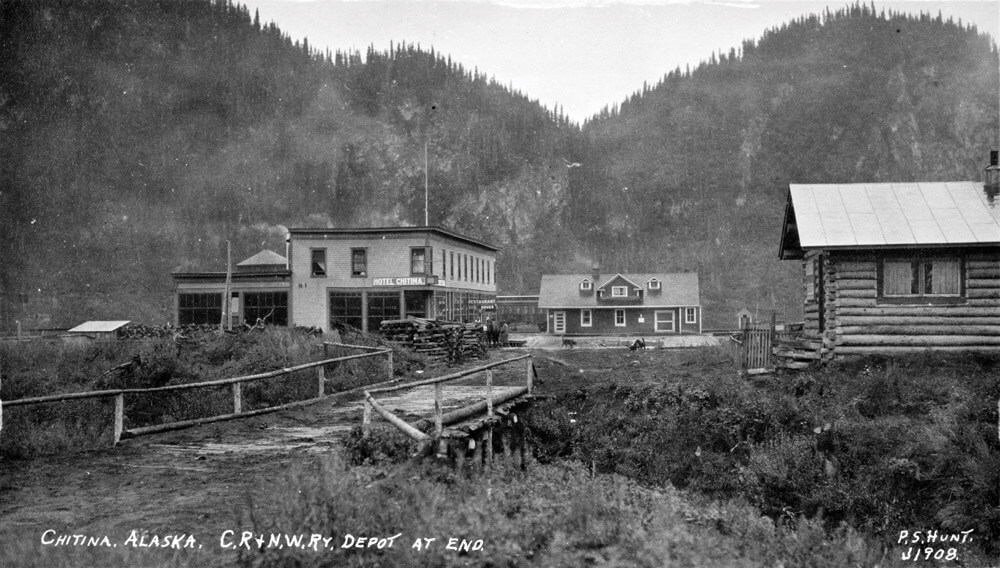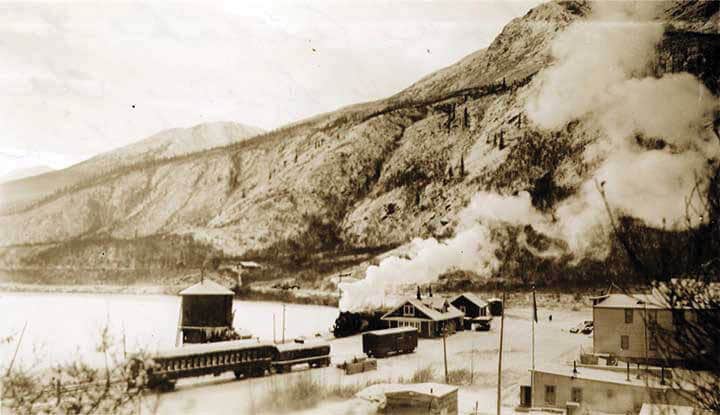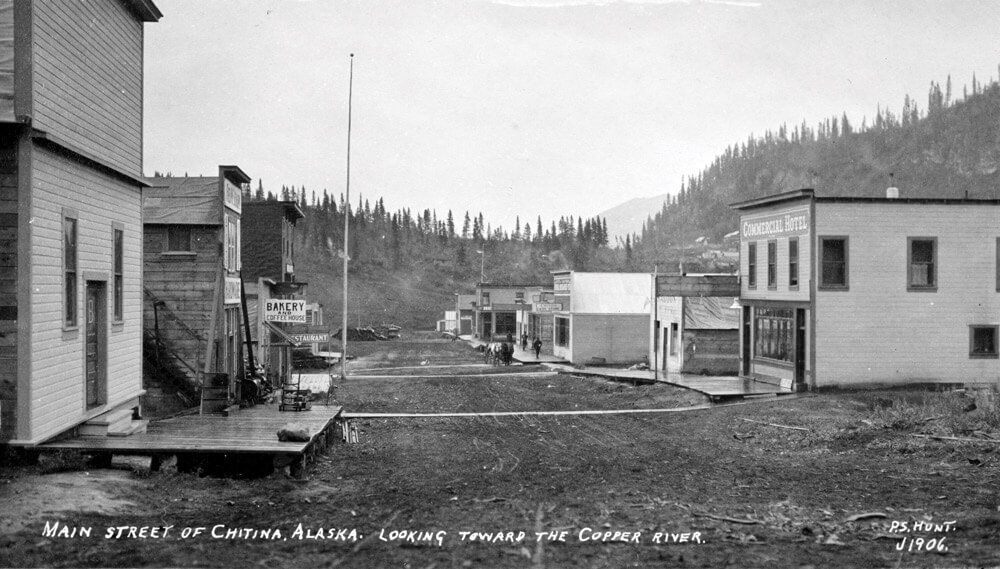
For 5,000 to 7,000 years, the Chitina area was home to the Ahtna, whose numbers were slowly decimated by the influx of people, disease and conflict.
Archaeological sites are located to the south and east of Chitina, which is located on the west bank of the Copper River, at mile 34 of the Edgerton Highway, 53 miles southeast of Copper Center.
It was the Ahtna who first directed miners to the incredibly rich deposit of copper ore that became the Kennecott mines. To get the ore to tidewater at Cordova, a syndicate of Eastern financiers, which included the Guggenheim brothers and the House of Morgan, built the Copper River Northwestern Railroad. The town of Chitina was established as a construction camp for the railroad. It later became a stop on the railroad and commercial center for the region.
“In 1920 a school was built for the local Native population, prompting the final abandonment of villages such as Taral and Tonsina because Ahtna children were supposed to attend school during the winter months,” Ahtna historian Bill Simeone writes. “The school operated sporadically until 1927 when it became permanent.

“Both the Native and non-Native population of Chitina increased until 1938 when Kennecott closed the mine and the railroad was shut down. The Alaska Road Commission closed its offices in Chitina in 1942, adding to the decline in population and in 1956 both the infirmary and the school closed and the remaining population dispersed to other places where jobs and health care were available.”
Out of the population of 110, 48.8 percent are Alaska Native or Native Americans. Most of the Native residents are involved in subsistence activities year-round, such as fishing, gardening, picking berries and herb gathering. The Native Village of Chitina is the local, federally recognized tribe.
Chitina Native Corporation is a wholly owned Native corporation in the Ahtna Region, with 260 shareholders who live statewide and in the Lower 48 states.
Today, Chitina is the prime jumping-off point to the Wrangell-St. Elias National Park, the largest national park in the country.
Stories from Chitina
The Ahtna History Book, written by Bill Simeone, which is scheduled to be published later this year, contains several Chitina stories. Here’s one Marilyn Eskalida’s mother, Maggie Eskalida, told Marilyn about different Ahtna clans who came into the Chitina area:

My mother told me the Tlingit Eagle Clan was first to come up the canyon from Eyak Lake and named Tsedi-na (Chitina) and were called “canyon people or Dits’i’ltsiine.”
As my mother explained, the Dits’i’ltsiine were the first to discover Tsedi Na’ and Tsisyu clan came along and settled at Taral Village. She told the story of Naltsiine having to go north to Paxson Lake to harvest caribou, and that was when a man was found running after the herd and Sourdough Gene and Paxson John named the man and his starving families Udzisyu and allowed them to marry into the Naltsiine clan.
My mother told me we came from Eyak Lake and the first to come up the canyon and named “Tsdi Na’.” Then one of the groups came and wanted their own sub-clan. They were denied and “went away mad” and were finally called Naltsiine “Sky Clan,” but remain temperamental to this day. After influenza [epidemic of 1918], the Naltsiine became the bigger populated and powerful clan since so many Dits’i’ltsiine died.
